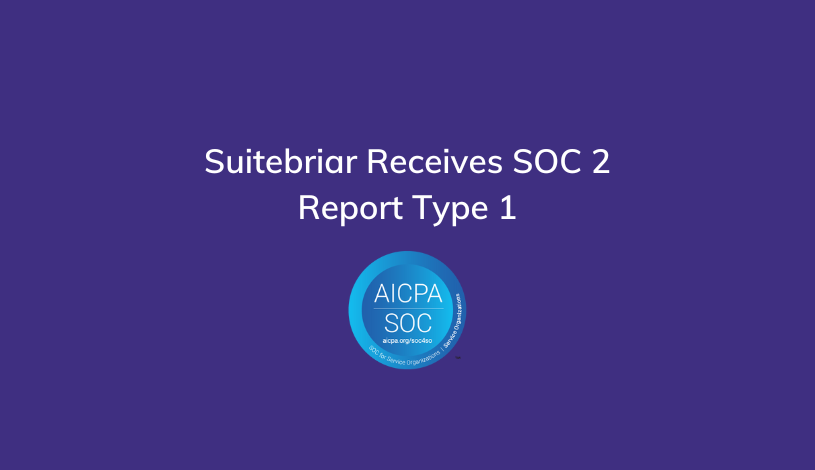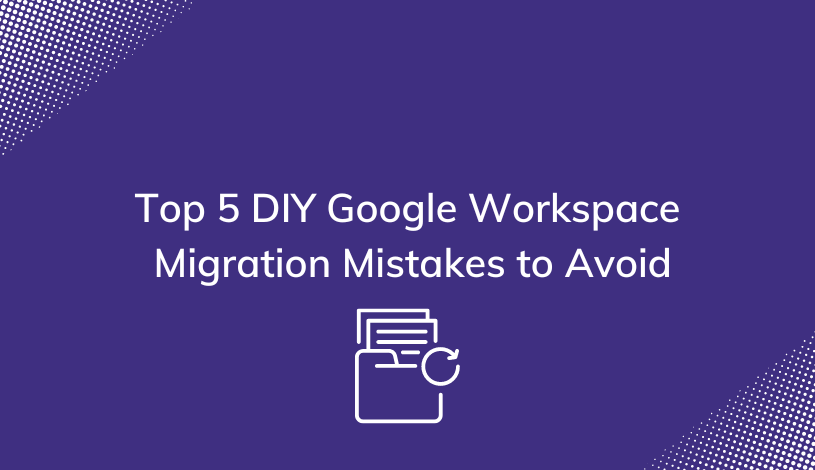What to Do About a G Suite Migration Failure
So you decided to change your corporate email and productivity apps to Google's G Suite. It's a great decision, but if you've experienced a G Suite migration failure you may be having second thoughts.
G Suite is a comprehensive set of products that allow your team to collaborate instantly and securely in the cloud. There are many reasons to choose G Suite for your business, but if you've already started the G Suite migration process you're well aware of those by now.
Even with the wonders of modern technology, and the tools Google provides to DIY a G Suite Migration, it’s not uncommon to be faced with problems that require some troubleshooting.
Google provides very detailed guides to make the migration to G Suite as easy as possible but some individuals and companies still experience a G Suite migration failure.
In the event you're in the midst of a migration failure, don’t be hasty in regretting the decision to switch to G Suite. Below are some solutions for common hiccups in the process.
Blocking or Non-Blocking, That is the Question

The first step to troubleshooting a G Suite migration failure is to determine if the issue is a blocking or non-blocking one.
A blocking issue means that the migration was “blocked” entirely and that nothing was transferred.
A non-blocking issue means that the migration was partially successful, but perhaps there are messages or folders that are missing on your new server that you know were available on your old one.
This distinction is important because the troubleshooting methods are very different for each.
Troubleshooting Blocking Issues with a G Suite Migration
Blocking issues can result from something as simple as a typing error in a username or password, so double check this.
Another issue may be that you do not have the correct privileges on your administrator account to allow for a migration.
Some other, more finicky errors might include:
- Making sure your servers can reach and recognize EWS
- Checking Internet Information Services (IIS) logs to make sure that the migration service is connecting
- Properly configuring impersonation
- Verifying valid TLS certificates
- Corrupted mailbox or invalid account
- Double checking that the client ID is correct
- That the corresponding Google service has been activated
- Verifying that the super administrator has been assigned to the G Suite domain
- Insuring that the existing server is properly connecting to the G Suite servers
Troubleshooting Non-Blocking Issues with a G Suite Migration
Non-blocking issues you may be experiencing with your G Suite Migration are targeted in a different manner because they involve errors in the transfer process as opposed to a complete failure of the transfer altogether.
To better determine the source of the issue, produce a migration report which will provide a list of errors if any exist.
Sometimes, the issue may also be solved by double-checking all of the migration parameters, such as those listed above, and retrying the migration entirely.
Otherwise, some other troubleshooting may include:
- Searching for the email by header and making sure that it wasn’t just mislabeled in G Suite
- Trying a different date range for migration
- Checking that the missing email isn’t too large (more than 25MB) or has an incompatible attachment
- Making sure that email messages are RFC compliant
- Turning off conversation view of emails
- Turning IMAP on and making sure that the user has enabled IMAP
- Checking folder size limits
Support for G Suite Migration Issues

Google has a wealth of information on their support website that includes step-by-step troubleshooting guides for G Suite Migration failures. These may be just the right solution for simpler issues such as those described above.
There is also a community section in their Help Center where others have shared their troubleshooting steps and product experts can also jump in to answer questions.
Your existing enterprise server may be able to help with some issues involving the export of certain folders or messages if you continue to have trouble. While this may seem counterintuitive given that you are leaving their server, they still have a duty to help you manage your files and data until the migration is complete.
Of course, the simplest solution may be to contact us.
As a Google Cloud Premier Partner, Suitebriar is a company that specializes in G Suite migrations and we would be happy to resolve any issues related to your poorly executed migration to get you back on track.
We offer white glove services to ensure a successful transition from legacy servers to the Cloud. Not only can we help to resolve any G Suite migration issues, but we also provide ongoing support and change management training to seamlessly integrate and customize G Suite services to your business needs. We deliver tailored and dedicated support to optimize your use of the G Suite within your company. This is vital given the investment that you are making in G Suite and Google Cloud Platform.
Related: How to Migrate Gmail to G Suite
Welcome to the Suite Life

G Suite offers a cost-effective way for your company to work collaboratively while also offering the security and reliability that you have come to appreciate from Google. Harnessing the power of Google Cloud technologies undoubtedly gives your company a leg up on the competition.
With the help of Suitebriar, you are guaranteed a smooth, stress-free G Suite migration process.








